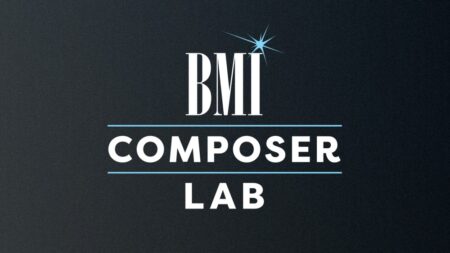Mei Semones bridges two cultures through her music, blending Japanese and English lyrics into a sound that’s entirely her own.
“I’ve always been bilingual — since I was a baby — so it felt natural to write songs in both languages,” she tells Variety.
The 24-year-old Japanese-American musician composes jazz-infused indie pop, delicately plucking the strings of her guitar while her soft, lilting voice effortlessly transitions between the two languages on her debut album “Animaru,” out now.
“One of the songs on the album is called ‘Animaru,’ and I felt like that word and that song encapsulated one of the main themes on the album, which is trusting your instinct and following what you love and like what you want to do — and what’s important to you,” Semones explains.
It’s a sunny late-April morning in Brooklyn, where Semones is based, and we’re seated at a bustling neighborhood coffee shop. Her cross-cultural identity is even reflected in her outfit: a light gray hoodie and jeans, accented with an embellished checkered scarf from the Chinese brand YanYan Knits and a barrette adorned with dangling butterfly and bow charms.
This summer, Semones and her bandmates will embark on the “Animaru” tour, performing across North America before heading to Asia for a series of shows beginning in late July. Semones isn’t new to touring, having opened for artists like Elephant Gym, Pachinko and Liana Flores.
“I think I’ve gotten better at playing so many shows,” Semones says. “Just learning more about how to structure a set and try to do transitions between songs — and trying to get better at interacting with the audience.”
On “Animaru,” each song serves as a love letter — though not of the romantic kind, Semones clarifies — to the people, places and moments that have shaped her. The album opener, “Dumb Feeling,” captures her affection for New York, while the rest of the ten-track record draws from friendships, her guitar, college memories and her relationship with her twin sister.
The album features a rich combination of string instruments — Noah Leong on viola, Claudius Agrippa on violin, and Noam Tanzer on bass — all grounded by the rhythmic pulse of Ransom McCafferty on drums. But this sound, especially the blend of English and Japanese lyrics, wasn’t always part of Semones’ musical identity. Growing up in Ann Arbor, Michigan, she and her twin sister began their musical journey with piano lessons at age 4.
“It wasn’t of my own volition,” Semones says with a slight smile. “But my parents and my grandma bought me and my sister a piano because [my grandma] really wanted us to learn — I think because she had wanted to learn piano when she was younger.”
Semones’ parents have always supported her musical endeavors, as they both have artistic backgrounds. Her mother, a graphic designer, illustrated the cover of “Animaru,” while her father plays the euphonium.
At 11, Semones switched to guitar and even joined a rock band program as an extracurricular activity. As a pre-teen, she was drawn to rock music, citing bands like Nirvana and the Smashing Pumpkins among her favorites. But it wasn’t until high school — when she joined the school’s jazz program — that she truly began exploring that genre.
“The reason I first started to take that class was because, ‘Oh, I can play guitar at school — that’s great.’ And then I ended up actually really liking that type of music,” Semones says. “So I was in the jazz program, which was small ensembles — quartets, quintets, mostly. Then I also had another band outside of school that was, I guess, what you would describe as neo-soul — R&B-ish. But that was just guitar; I wasn’t singing or writing.”
Semones later attended Berklee College of Music in Boston, where she met her bandmates. Though she never had formal vocal training, she gradually began singing in front of others during her senior year of college.
“I feel like people have mixed opinions about music school because — for a lot of people — [music] is their passion. And then, when it’s put into an academic setting, I feel like it can either be great, or it could also be not that great, depending on the type of person you are and your relationship with music. But for me, personally, I actually really enjoyed it. It was like a time where I could just practice a lot and, like, take a lot of specialized classes that I was interested in, and learn a lot about harmony and music theory and how to transcribe and play.”
Although songwriting wasn’t new territory for her — she had been writing since middle school — Semones didn’t start writing in both English and Japanese until her song, “Hfoas,” released in 2020.
“It was the first song I wrote that I really liked, and the first song I wanted to share with people,” she says. “I think that had a lot to do with the fact that it had lyrics in both languages, because it felt more authentic to who I am as a person and as an artist.”
After graduation, Semones moved to New York in the summer of 2022, where she found a job as an assistant teacher at a Japanese preschool, although her music career let her to quit last year, when she began touring more frequently. After beginning the writing process for “Animaru” that spring, Semones traveled to Connecticut to record her debut album at Ashlawn Recording Company — the studio run by her friend and producer Charles Dahlke (of the Brazen Youth). The recording was split into two sessions in late May and August.
“It was a lot [of takes]. Every person in the band is pretty meticulous. I don’t think ‘picky’ is the right word, but everyone’s just trying to get the best take, and so sometimes you end up doing it over and over again — but then usually you end up using an earlier take anyway,” Semones says of the recording process. “Sometimes you have to go through all that to understand what you want.”
Although “Animaru” is her first full-length album, Semones gained recognition for earlier work, including her 2024 EP “Kabutomushi.” She even caught the attention of Red Hot Chili Peppers’ Flea, who described her music as “deft, articulate, and carries a mysterious power.”
Her combination of Japanese and English has inspired fans to learn a new language as well. “They’ve said, ‘I was trying to learn Japanese, and listening to your music helped me,’ or something like that,” she says.
Indeed, Semones will continue to embrace her Japanese-American identity through her music — a mindset she hopes will encourage those who listen to her.
“Not everyone is multicultural,” she concludes, “but I hope that my music can inspire people to embrace and love every side of themselves.”
Read the full article here








